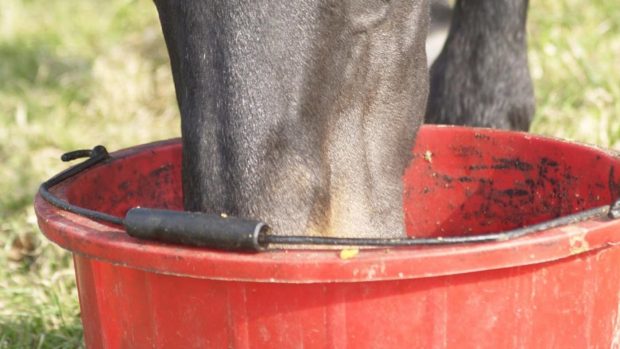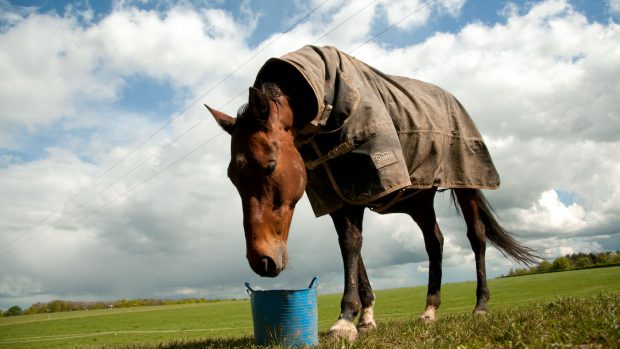The world of horse feed is constantly changing thanks to research and investigation by the leading feed companies. If feed is what fascinates you, here’s a look at the latest developments and the research that goes on behind the scenes.
1. Calming
Equifeast have conducted trials with their customers linking behaviour with diet and the levels of magnesium and chelated calcium in the blood. As a result, the team suggest that it is all too easy to provide your horse with too much magnesium, which anecdotally is believed to lead to difficult behaviour.
“We believe we have identified a range for blood magnesium levels,” says research director Malcolm Green.”But getting the blood magnesium into this range is not itself enough to guarantee good behaviour and performance.
“More than half the ‘difficult horses‘ blood tested had magnesium in our ideal range. But it was not until we added chelated calcium to those diets that our customers felt behaviour stabilised. These findings are supported by our database of thousands of horses monitored through the first months of supplementation.
“Similarly, horses with plenty of chelated calcium but too much or too little magnesium also showed unreliable behaviour. It stabilised in 90% of the cases we looked at when both chelated calcium and magnesium levels were appropriate, in our opinion.”
More details: www.youtube.com/equifest
2. Ulcers
The horse’s stomach constantly secretes hydrochloric acid, which is essential for digestion in a trickle-eating animal such as an equine. However, when your horse is fed individual meals, or if he is stressed, there can be a disruption in normal gastric functioning.
“As a result, excess acid is not bound within the food and mucin (glycoprotein) secretion can stop,” says Dr Tom Shurlock of British Horse Feeds. “This exposes the stomach lining and the acid can act directly on it. The rising acidity of the contents of the stomach can encourage specialist bacteria that will digest the stomach wall and ulceration occurs.”
Clinical trials have shown that pectin, at high levels of acidity, forms a gel (in nutritional terms pectins are defined as mucilages) that strengthens and thickens the stomach mucin. The presence of an emulsifying agent — a surfactant — facilitates this process.
“Recent research has found that both pectin and beta glucans are readily leached from fibre by stomach acid. About 70% of structural pectin and 50% of beta glucan are released into the stomach. The richest sources of these nutrients are beet pulp [pectin] and oat fibre [beta glucan].
“By feeding thse products daily, you may well be able to maintain stomach function.”
More details: www.britishhorsefeeds.com
Reference: Murray MJ, Grady TC: The effect of a pectin-lecithin complex on prevention of gastric mucosal lesions induced by feed deprivation in ponies. Equine Veterinary Journal: 34(2), 195-108, 2002
3. Micronutrients
A recent survey by Dodson & Horrell collected information on the diet and management of elite performance horses in the UK. Their concentrate fee and forage was weighed and samples analysed to test the nutrient value. Details of their daily exercise, bodweight and fat score were also recorded.
The findings were as follows:
>The average fat score of all disciplines was neck 3.5 (out of a possible 5), middle 3.5 and rump 3, (3-3.5 is an acceptable guideline for a leisure horse), but there was a trend for dressage horses to have higher neck scores. The majority of horses received 2% of bodyweight as forage and all were fed some form of concentrate feed.
>The micronutrient intake of horses competing at lower levels was adequate, but those competing at higher levels were not receiving optimal levels. The main explanation for this was confusion between temperament and the supply of calories.
The authors of the study concluded that continued education was needed to enable horse owners to balance calorie intake correctly, particularly in excitable horses, with optimal micronutrient provision.
More details: www.dodsonandhorrell.com
Reference: www.dodsonandhorrell.com/nutrition-feeding-advice/weight-loss-gain
4. Flavour
Saracen is working with a team of flavouring experts to formulate some unique tastes within its performance horse range. These have been trialled and have been shown to help maintain feed intake in even the fussiest of horses. Watch this space.
More details: www.saracenhorsefeeds.com
5. Hydration
Research by the Waltham Centre for Pet Nutrition — behind the Spillers and Winergy brands — and Michigan State University suggests that short-chop fibre may positively affect your horse’s hydration levels. Results showed that during exercise, the body mass of horses fed grass hay and short chop was lowest because the rapidly fermentable fibres may have created a greater “pool” of available water, allowing increased thermoregulation via sweating.
More details: www.winergy.com and www.spillers-feeds.com
Reference: Spooner H. S., Nielsen B. D., Schott II H. C.,. O’Connor-Robison C. I, and HARRIS P (2013) Hydration status of horses performing endurance exercise: II. Evidence for a role of dietary fibre type, not oil supplementation Journal Comparative Exercise Physiology (in press)
6. Wet steam extrusion
We asked Dr Catherine Dunnett, consultant equine nutritionist to Keyflow, to explain what this is.
“Poor digestibility of starch in the small intestine, such as that from some straight cereals, pelleted ingredients, or other uncooked raw materials, is economically inefficient [as you have to feed larger quantties to achieve the same energy output],” she says. “It can pose a risk for digestive problems, including colic, laminitis, colitis and can even have a negative effect on immune function.
“Cooking cereals untangles the complicated molecular structure of starch, making it more easily digested in the small intestine. Wet steam extrusion injects moisture and heat into the feed ingredients — so cooking it efficiently.
“It can also make other feed components such as amino acids [proteins] and oils more accessible to digestive enzymes, meaning that overall your horse gets more out of his feed.”
More details: www.keyflowfeeds.com
For more information on how to feed fussy eaters and difficult dieters, don’t miss 13 February 2014 Horse & Hound magazine.



